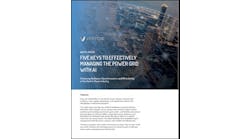By Stephen L. Cowell
Guest Blogger*
May 27, 2010
Now that it has passed the House of Representatives with flying colors (246 to 161), we are this close to making Home Star a reality. This is the plan, supported on both sides of the aisle, which would give U.S. homeowners rebates for energy efficiency improvements and cut energy consumption. Most importantly, Home Star will put many of the country’s construction folks and blue-collar wage earners back to work, so let’s get it passed in the Senate and on President Obama’s desk already!
The bill has unique bi-partisan support and is backed by one of the largest coalitions to hit Washington in years. In just a few months, the Home Star Coalition has signed more than 1,300 members. Supporters come from labor unions, the Chamber of Commerce, the National Association of Manufacturers, contractors, retailers, utilities and regulators, to name a few groups. We’re gaining more ground every day and the time is right for Congress to make it into law. But first a little history:
Home Star was introduced to The White House in November 2009. The concept was so well received, the proposal was unanimously voted for by the President’s Economic Recovery Advisory Board the following month. Since then, this plan to weatherize America’s homes has undergone much review and analysis by a coalition of more than 1,000 stakeholders, the Senate, the House and the Administration. Its pros and cons have been analyzed, dissected and debated on blogs, TV and in mainstream newspapers for months now. It is time to move past the talk and get to the action. Home Star will put hundreds of thousands of people back to work and provide economic recovery to a large number of blue-collar workers hit hardest by this recession.
The disparity between blue- and white-collar workers who have been affected by the economy is striking – one in five workers in blue-collar industries across America is jobless. On the other hand, those making $150,000 a year or more are barely impacted. (Three percent are unemployed as of this writing.) These are the findings of a study** authored by Professor Andrew Sum, Northeastern University’s director of the Center for Labor Market Studies. In a radio interview earlier this year, he said, “It’s The Great Depression for blue collar workers – with dire implications for society…this rate of joblessness is greater than any post war time period in history.”
Home Star will benefit unemployed blue-collar laborers and experienced workers who have lost jobs in construction and manufacturing because their skills can be easily adapted. Beyond retrofitting, Home Star will have a ripple effect creating jobs in other areas such as retailing, trucking and manufacturing. In fact, US factories will crank out 92 percent of the products needed to support the program, from insulation to replacement windows.
Home Star will also help cash strapped homeowners defray the costs of investments that will lower their energy bills. It would provide rebates of $1,000 to $1,500 for insulation, duct and air sealing, installation of more energy efficient equipment and other items at a “Silver Star” level. For more comprehensive home energy improvements (“Gold Star level”), consumers would receive a federal rebate of up to $3,000 for retrofits that result in savings of 20 percent. And the higher the energy savings achieved, the higher the rebate, of up to $8,000.
Homeowners who use less energy can create an economic environment that can help ease problems in the housing market. Not coincidentally, the mortgage default crisis occurred at exactly the same time that energy prices spiked in 2007 and 2008. High energy bills may only be one factor in pushing a homeowner over the edge. But the correlation between high energy bills and a family’s ability to afford a mortgage payment is a direct one.
The icing on the cake is that Home Star will help preserve the environment. Residential buildings generate more than 20 percent of our nation’s carbon dioxide emissions — twice what automobiles emit. Existing techniques and technologies in energy efficiency retrofitting can reduce home energy use by 30 percent per home and lower associated greenhouse gas emissions significantly. Total associated savings in home energy bills is estimated to be as much as $9.4 billion over 10 years. Not a bad return on a $6 billion investment in Home Star!
If Home Star passes, programs will be set up here in America, right now. Its unemployed citizens can finally get back to work. Retrofit workers will earn decent wages, spurring new opportunities for themselves and their families. The societal benefits of Home Star are infinite.
By enacting Home Star, we can help end The Great Blue Collar Depression and keep our economy on the road to recovery.
**”Unemployment, Inequality and tackling America’s Job Crisis, published by Northeastern University’s Center for Labor Market Studies, Feb. 2010. http://www.clms.neu.edu/publication/documents/Labor_Underutilization_Problems_of_U.pdf
Stephen L. Cowell is chairman and chief executive officer of Conservation Services Group, based in Westborough, Mass. Mr. Cowell also co-founded Efficiency First, the Home Star Coalition and serves as president of the Northeast Energy Efficiency Council
*Originally published May 17 at http://www.huffingtonpost.com/stephen-cowell/a-green-cure-for-the-blue_b_578521.html#
Visit www.realenergywriters.com to pick up a free Energy Efficiency Markets podcast and newsletter.






